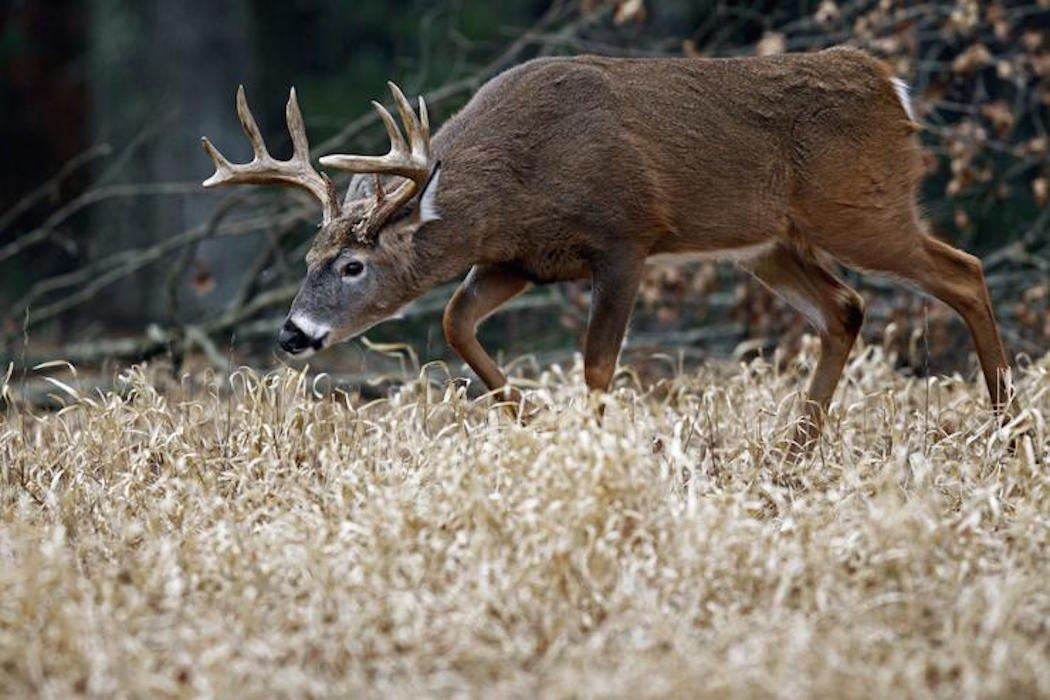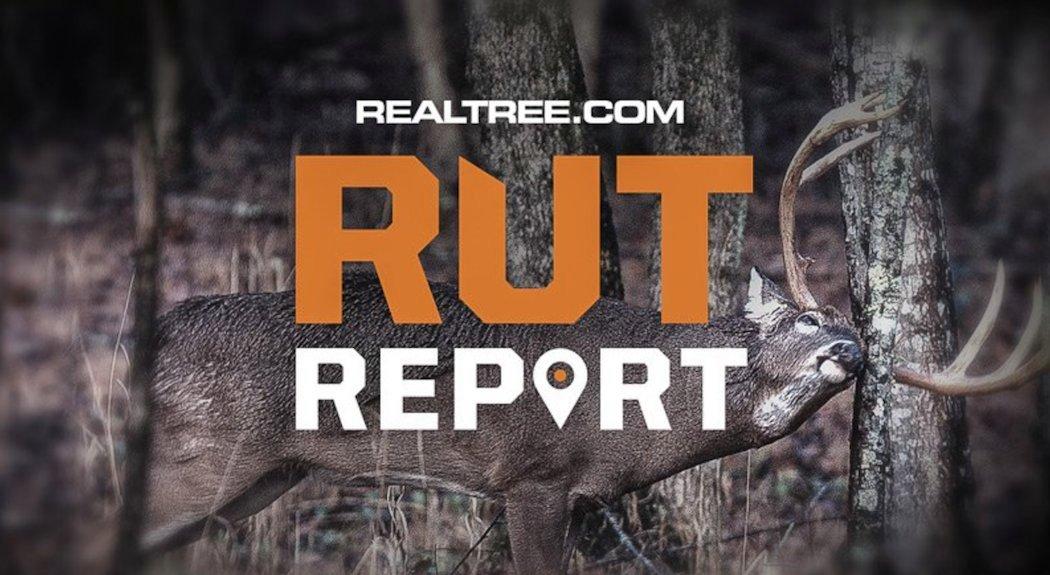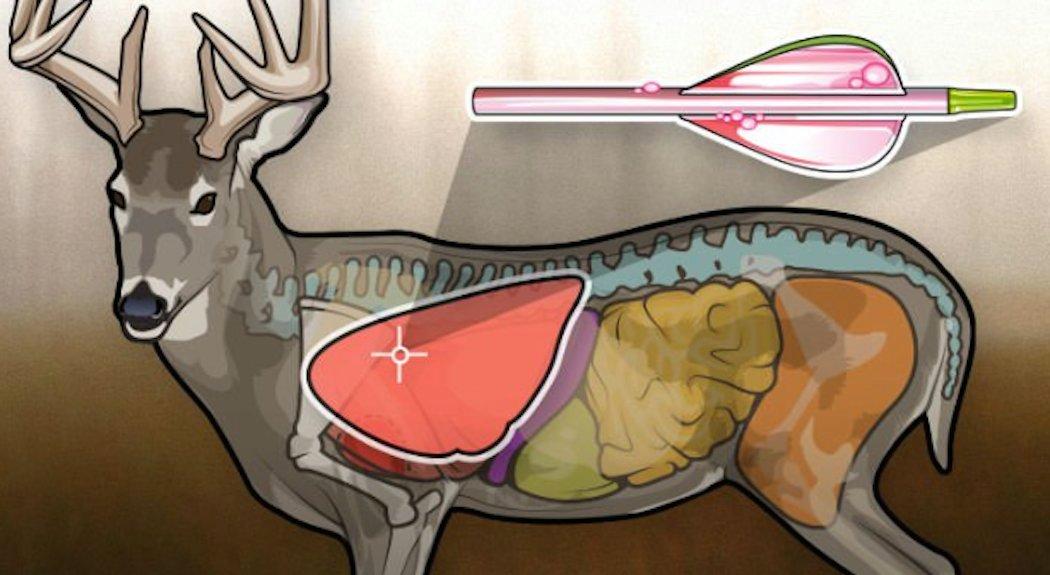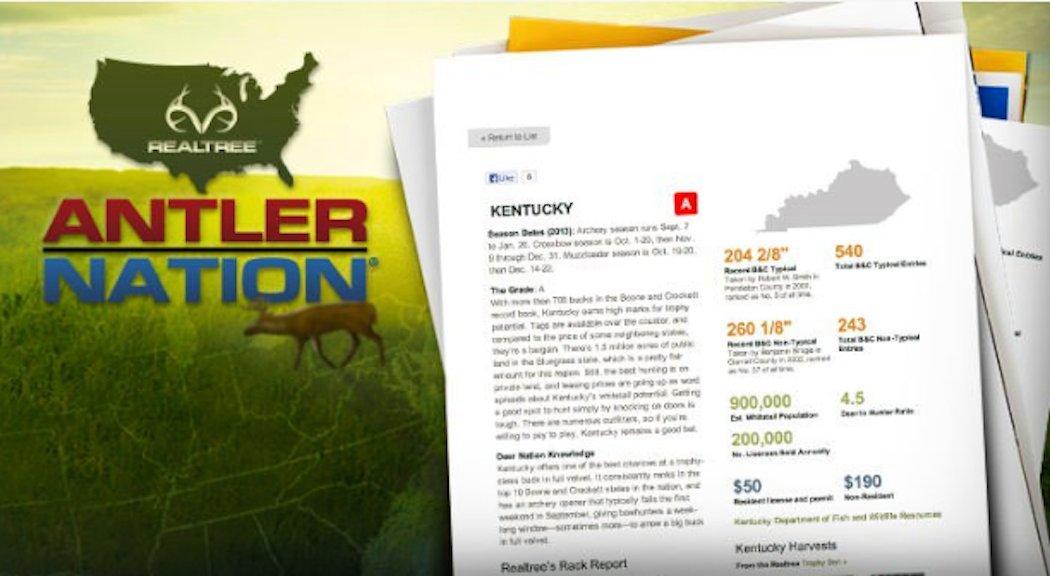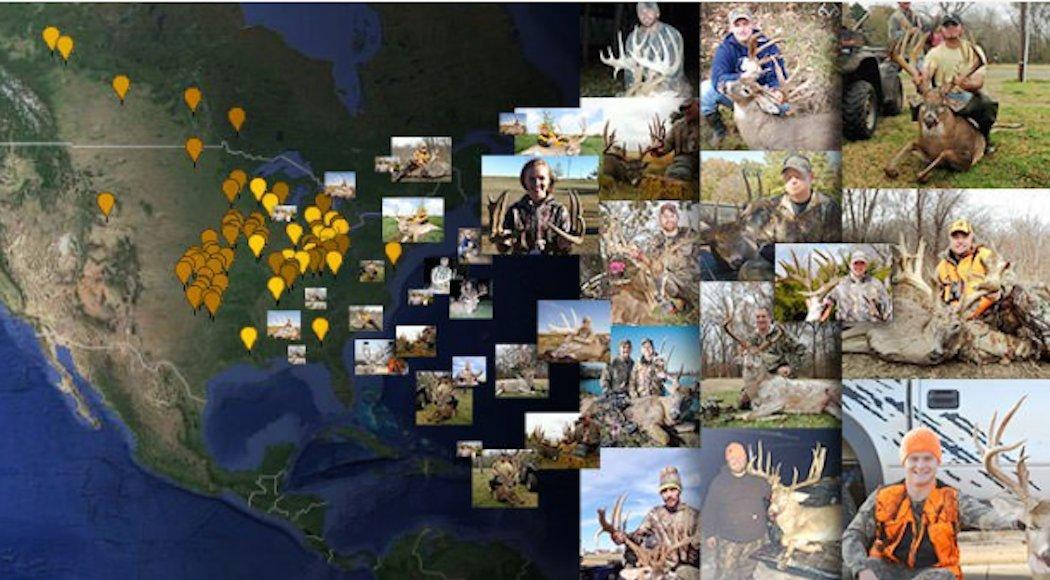When It Comes to the Rut, Take Everything You Hear with a Grain of Salt
Every season, whitetail enthusiasts engage one another and debate the hottest topics in all of deer hunting. Who can blame them? I can't. I'm one of them. It's these very questions a hunter must ask in order to be successful and consistently shoot mature bucks. Due to all of this talk, it can be hard to know what information is reliable and what is not.
Since the rut in the South is best defined as a gallimaufry of events, it makes it even tougher to listen to what others have to say. In most cases, it's not that they have ill-intentions or have no clue of what they are talking about. It's just that in some cases, what they have to say does not apply to a specific location at that specific time.
Considering this matter, it is imperative that a hunter uses selective hearing when taking in the information received from his fellow hunter, deer processor, biologist, landowner, etc. And before someone finds me and burns my house down - I am not here to say I know more about whitetails than these individuals do. Odds are that I don't. But I am here to help you sort through the hullabaloo and to stress the importance of correctly interpreting the facts.
Those who chase whitetails hear the good, the bad and the ugly. A deer hunter has to know how to separate the goods from the garbage in order to get the facts straight.
The Mixing Pot
There is a long list of factors that can make it hard to stay confident in pinpoint claims. Intense hunting pressure, big timber, diverse habitat, unsystematic food sources, desultory feeding locations, climatic differences and mixed gene pools from re-stocking populations all make life hard for a deer hunter. That said, it is reality and we have to deal with it in order to fill our tags.
Many states allow gun-hunting during the rut. This doesn't help matters. The intense pressure drives deer to seek out the safety dense timber provides. The constant badgering from hunters also interrupts natural breeding behavior; causing some does to be missed during their first cycle. Some studies have also shown does being missed during their second cycle. Because of this, the rut can sometimes get stretched out like an accordion.
In many states, current populations are a result of restocking - an effort that brought in different subspecies of whitetails. When in their native habitat, these subspecies followed slightly different mating behaviors and annual times for those behaviors. Such is not nearly the case in the Midwestern states. Along with climate and the need for a defined fawn in the North, this is one of several explanations for a very concentrated rut in that region.
As previously mentioned, this agglomeration of factors makes deer behavior much more localized. Understanding that in itself will give you the upper hand in what advice to take and what to disregard.
It's all a matter of timing, location and perspective.
The Professionals
Deer Processors
Deer processors can be excellent sources of information. They receive carcasses every day. The good news is the carcasses have only been carcasses for at most 24 hours.
The information that can be pulled from these carcasses can be helpful if a hunter so chooses to use it. Staining of the tarsal glands, broken tines, puncture wounds, swollen necks, and many other bodily characteristics are surefire signs that the rut is ramping up. You can also tell what the deer are feeding on by examining the entrails.
This information can be extremely helpful, but the investigation can be all for nothing if the whitetail didn't come from your neck of the woods. Call your local processor to see what is being brought in, but make sure the reports are coming from areas near you. If they are, don't hesitate to incorporate this newfound information into your game plan. Dan Glier, owner of Best Deer Processing, couldn't agree more.
You can tell when the rut is starting to kick in, Glier said. Body characteristics show whether deer are rutting or fixing to start doing so. I always see a sudden increase in mature bucks being brought in right when the rut begins in my area.
Don't Miss: 4-Step Deer Butchering: The Path to Amazing Venison
Landowners
This is probably the best source of information for localized activity. Most landowners are masters of the agricultural profession. Sometimes they are hunters, sometimes they are not. They might not understand what they see the deer doing - but they see it. They give you the report and you go in and investigate to find the answers.
Bill Davis is a landowner of 61 years. I have hunted his property for more than 15 of them. Of all the years he has owned the land, he has never killed a whitetail. Even so, he knows exactly how they use his land.
Us landowners know what the deer do first hand, Davis said. We work the land, so it puts us right in the middle of them. Take care of the land and property owners will help you with whatever you need. And remember to shut the gate on your way out.
When it comes down to the specifics for localized activity, there is no better source than a landowner. However, sometimes they aren't whitetail savvy. To get factual answers, politely badger them with questions until you dig up the information you need.
Don't Miss: You Own the Land. You Don't Own the Deer.
Fellow Hunters
It's important to listen to your fellow hunters. They are in the field. They do what you do - sometimes. Phillip Vanderpool has long been one of America's deer-killing icons. As a television host for Dominator 365 on the Sportsman Channel, he spends most of his time afield chasing mature whitetails.
The serious deer hunter has to hunt smart, Vanderpool said. It's imperative to listen to your fellow hunter; but you must look at your specific conditions. Pay attention to fronts, feeding patterns, watering habits and rut sign on your land. If someone gives you some advice, listen to them, but take it with a grain of salt. What is working for them elsewhere may not work for you on your property.
Don't Miss: 5 Deer Hunters Who Tick Everyone Off
Conservation Officers
Correctly interpreting the facts is the name of the game. It isn't undermining a fellow's intelligence to double-check them; it's ensuring your own. About a year ago, a fellow hunter and I got into an argument about a specific game law. So I called the corresponding DNR for the answer. I asked, they answered.
I went into a panic mode. According to this official, I had been hunting illegally for quite some time. Then my common sense kicked in. I cross-checked this newfound information with a conservation officer of 30 years. It turned out that the answer I had received from the new guy was wrong. I hadn't violated any law. There were regions around that the practice I inquired about was in fact illegal, but was not so in the area I was hunting in. This was a prime example where the information did not apply to me at that specific time in the specific location I was inquiring about.
Donald Depp, a retired conservation officer who served for 28 years, shares his thoughts.
Hunters sometimes don't fully understand game laws, Depp said. The questions hunters ask are often too vague. If you want a specific answer, ask a specific question. The rut is often misinterpreted as well. It's important to influence whitetail behavior in a positive way through properly managing them and reducing pressure.
Don't Miss: 8 Weird and Wacky Hunting Laws
Wildlife Biologists
When needing to get the bare facts on or about a whitetail, it's hard to beat a wildlife biologist. Even so, it is hard for biologists to keep record of everything that is happening on every piece of property; which poses a problem when rut activity is in fact so localized.
It's vital to listen to biologists, but to apply information correctly on a case-by-case situation. If they say the rut is projected to begin at a certain time, use that information in conjunction with personal scouting and other more localized sources so you'll be ready when things start to heat up.
The theory that the moon triggers the rut is false and has long been debunked. It's all driven by photoperiod (daylight length). That said, weather and temperature can play a role in how much rut activity seen during daylight hours. Ask your local biologist(s) if they've back-dated any fetuses in that area. If so, and they have a large enough sample size, they'll be able to tell you when the bulk of the does are bred in your area each year. Knowing this information is invaluable — because the rut happens the same time each year (plus or minus a couple days).
Don't Miss: 7 Deer Biologists Who Changed Hunting Tactics Due to Research
Be Your Own Boss
Self-reliance is important. The gut is a hunter's best friend. It won't always speak up. But when it does, listen to it. It speaks wise words. It won't always be right. But it'll likely be right more than it's wrong.
Furthermore, those who implement Quality Deer Management (QDM) are not only improving their herds, but their understanding of them. Establishing organized food sources, monitoring activity with trail cameras, providing strategically placed bedding, and other good practices familiarize you with the land you hunt. As the hunter, it keeps you involved; leaving you less dependant on information coming from outside sources. You collect most of the data you need by managing the land you hunt.
We can all improve our own understanding of whitetails. My advice is to read, watch or listen to proven sources any chance you get. Read Realtree.com and our many different educational resources.
Realtree.com Deer Hunting Interactive Resources
Want real-time information for your area on the rut? Get the latest information for your state from our rut reporters. They're in the trenches gathering the intel you need to plan your next rut hunt.
Go Here: Realtree's Rut Report
Did you just shoot a buck of a lifetime? Know where the arrow hit but not sure what vitals were struck? This shot placement interactive guide sheds light on what arrows look like with certain hits, what type of blood trail to expect, how long to wait before trailing, and much more.
Go Here: Realtree's Shot Placement Interactive Guide
Are you trying to manage for mature bucks? Wanting to learn how to age bucks on the hoof so you can make a more informed harvest decision this fall? Check out this interactive guide. It explains tips and tricks for determining what age class a given buck belongs to.
Go Here: How to Age Bucks on the Hoof
Need information on the current state of the deer herd? Want help planning an out-of-state hunting trip? This resource sheds light on season dates, license costs, trophy buck potential, little-known knowledge about specific locations, etc.
Go Here: Realtree's Antler Nation
Love reading stories about monster bucks? Want to know where the big ones are falling? This resource keeps you up to date on where the biggest bucks are being taken. Who knows, there might even be some deer near you.
Go Here: Realtree's Rack Report
Long story short, it's important to educate yourself. Even more important, you have to listen to the instinctive voice inside yourself.
Lessons Learned
This lesson of selective hearing we're speaking of — I've learned it the hard way several times. One particular instance stands out.
The stage was set. I was settled in, my arrow was knocked, and I was about to go Fred Bear style on a big whitetail. There was only one problem. It seemed every deer on the farm had vanished. The morning crept by without a single deer sighting. So, needless to say, I was getting good at twiddling my thumbs.
Recent reports from others in surrounding counties unveiled that things were slow for them as well. Whitetail behavior in their areas showed no sign of the rut in the near future. What did I do? I crawled out of the blind earlier than I typically would and trekked back to the truck. I had work to get done and the consensus was that deer movement was at a historical low all over the South. So, I left the woods — bad move.
Now, so everyone knows, I am a man of faith. But when I pulled the SD card on the trail camera two days later, my big balloon of faith (in deer season) popped and went sputtering skyward. Not 10 minutes after I had left, a massive 140-inch nine-point by the name of The Drop-Tine Nine had strolled in front of my blind, nose to the ground, in full pursuit mode.
I concluded that just because the rut isn't rocking in one location, doesn't mean deer aren't looking to make sweet love in another. The moral of the story is to disregard reports coming from x number of miles down the road. Keep your ears open to current events, but never make a pivotal decision based on someone else's experience; especially from distant locations. No one knows what the deer are doing on a particular piece of property, except those who hunt it. In essence, don't throw in the towel and skip out on the woods just because John Doe from three counties over says he is not seeing any rut activity.
In the end, we all just want the facts. We want the information that will make us successful hunters. Sometimes the answers we seek might come from one of the professionals. Then again, the most qualified expert on your hunting grounds won't be behind a clipboard, butcher knife or badge. The best teacher waves his white flag every time he teaches another lesson. Learn from him as well. When it's all said and done, there is secret weapon to separating the corn from the crap. You just have to jump in and wade through it one step at a time.
Don't Miss: How to Know When the Best Days of the Rut Will Be
Editor's Note: This was originally published June 23, 2018
Are you a deer hunter wanting to learn how to accomplish your goals? Check out our stories, videos and hard-hitting how-to's on deer hunting.


